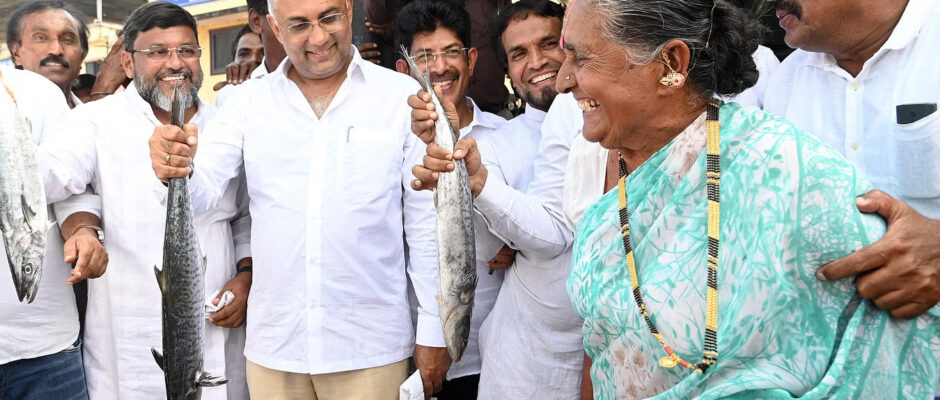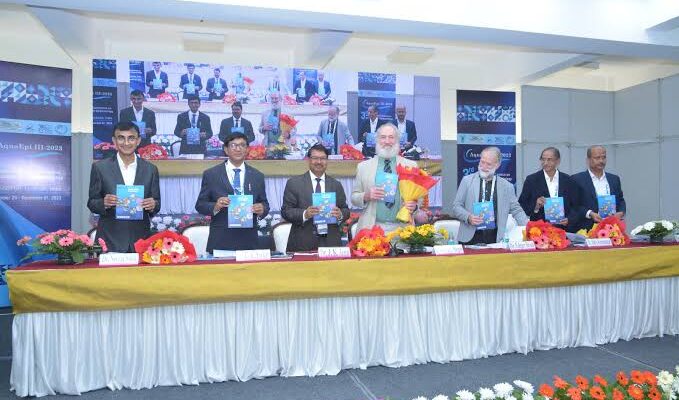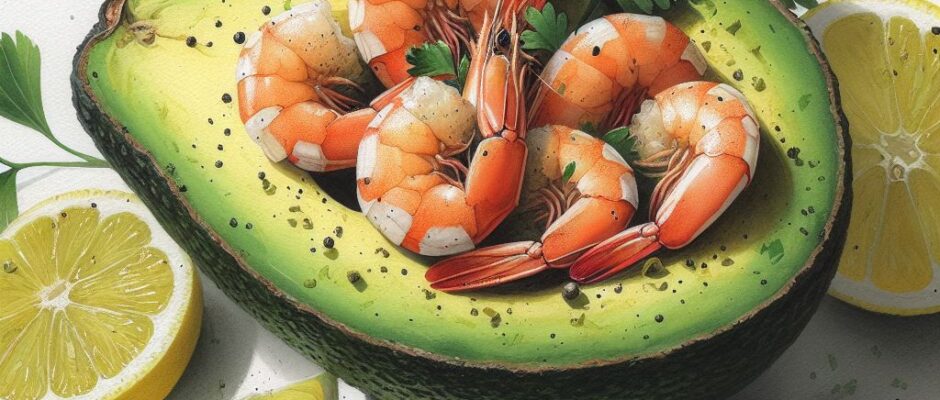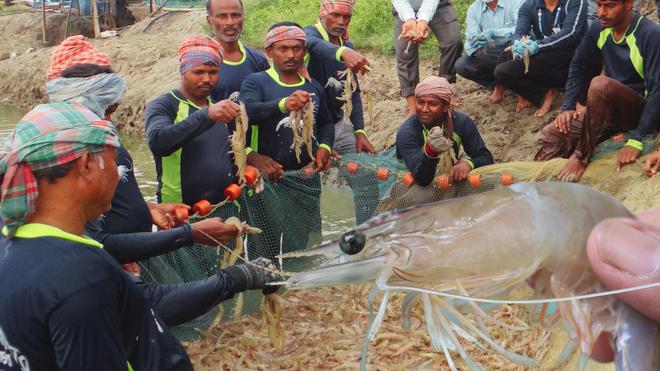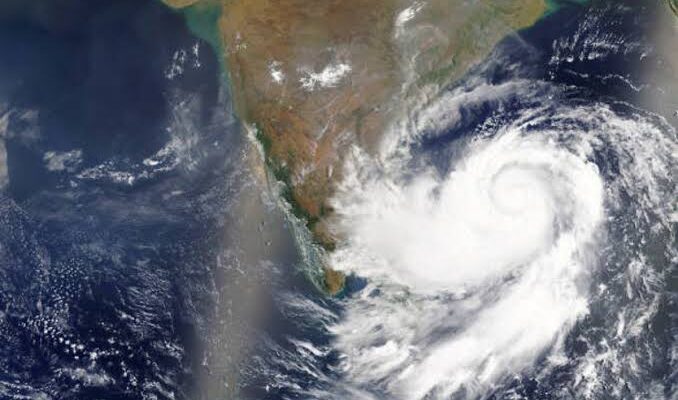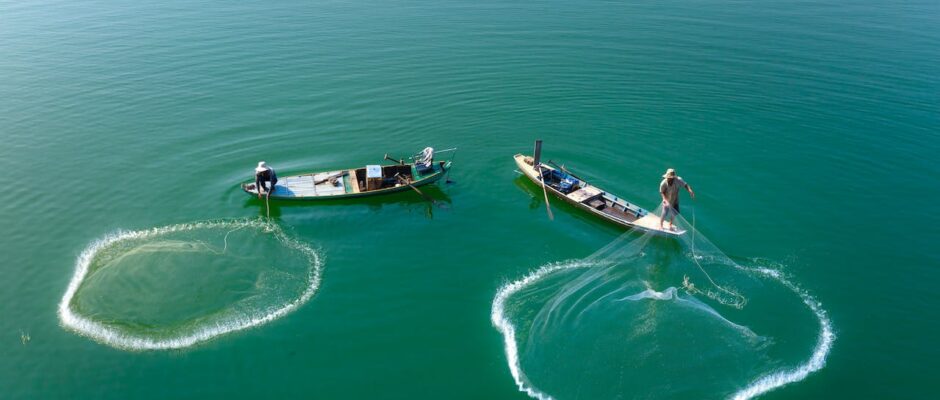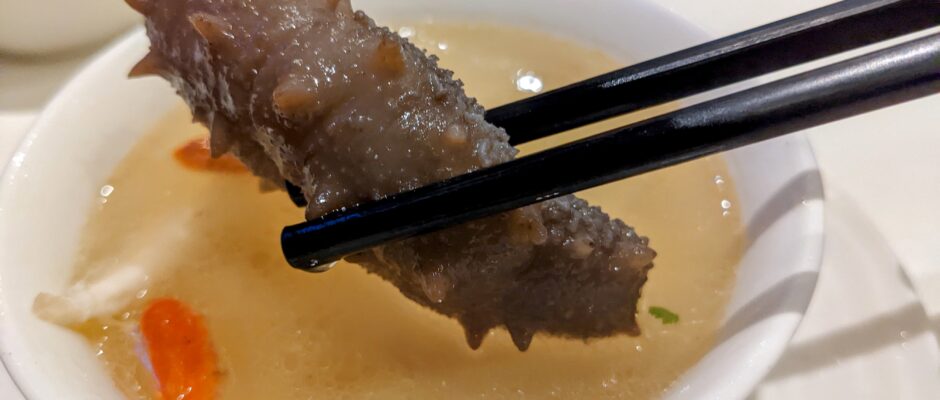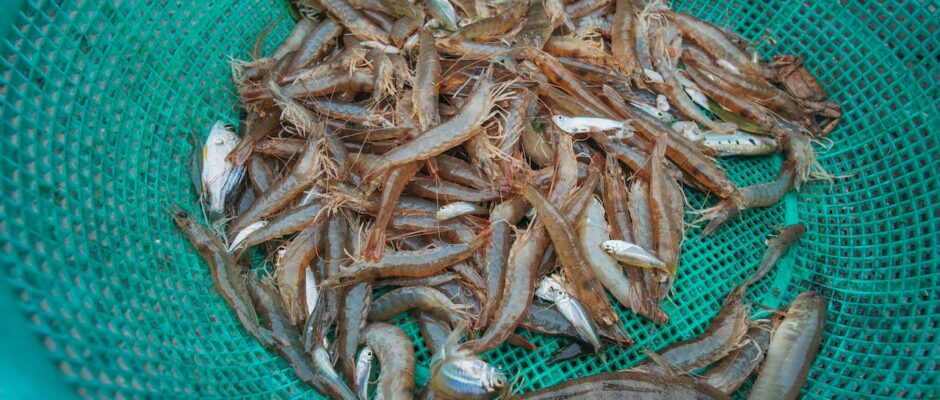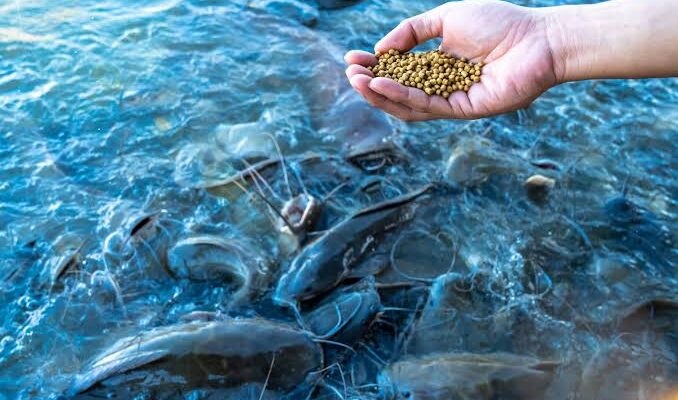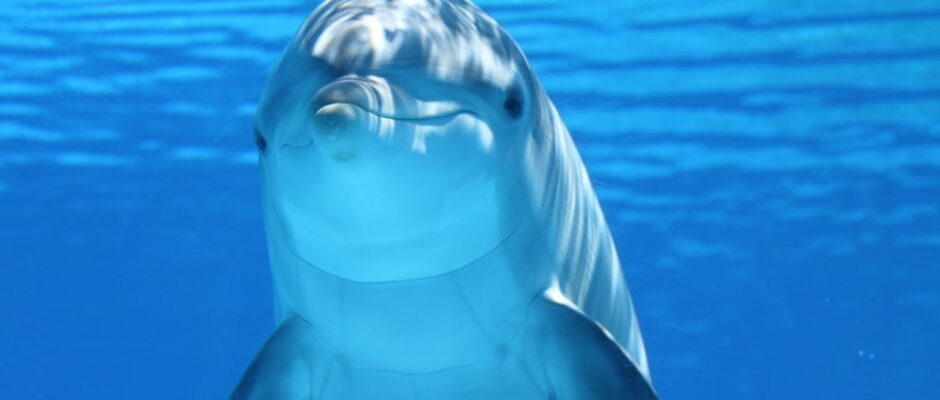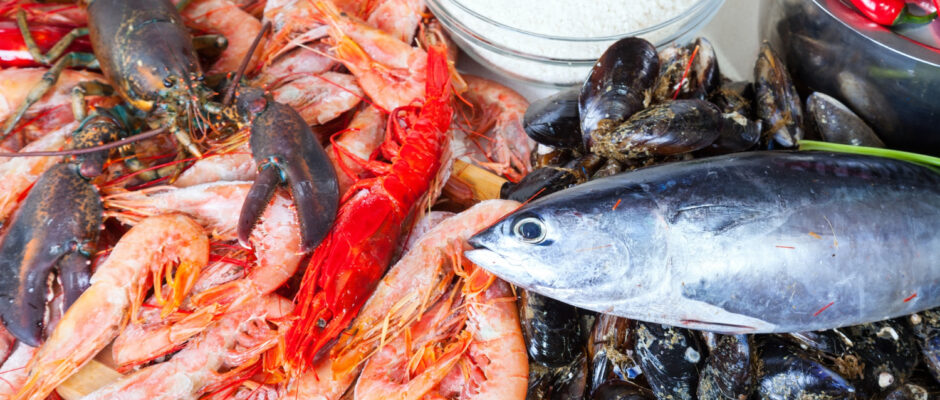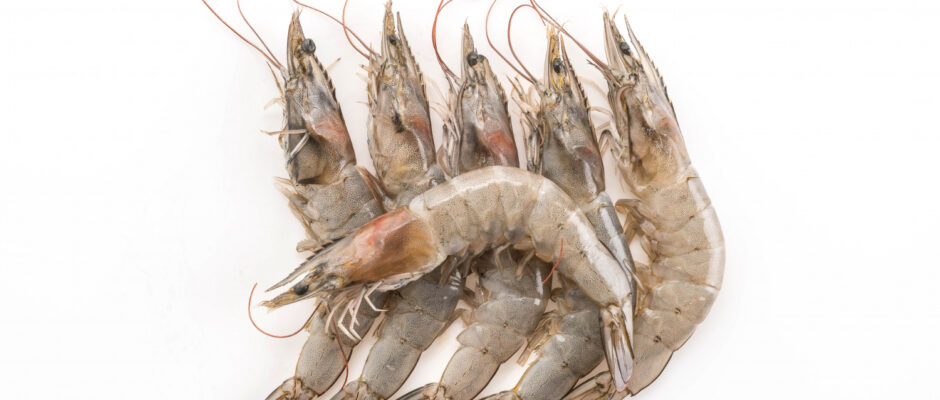The global shrimp feed market is primarily driven by the increasing demand for seafood. IMARC Group’s report titled “𝐒𝐡𝐫𝐢𝐦𝐩 𝐅𝐞𝐞𝐝 𝐌𝐚𝐫𝐤𝐞𝐭 𝐑𝐞𝐩𝐨𝐫𝐭 𝐛𝐲 𝐓𝐲𝐩𝐞 (𝐆𝐫𝐨𝐰𝐞𝐫, 𝐅𝐢𝐧𝐢𝐬𝐡𝐞𝐫, 𝐒𝐭𝐚𝐫𝐭𝐞𝐫), 𝐈𝐧𝐠𝐫𝐞𝐝𝐢𝐞𝐧𝐭𝐬 (𝐒𝐨𝐲𝐛𝐞𝐚𝐧 𝐌𝐞𝐚𝐥, 𝐅𝐢𝐬𝐡 𝐌𝐞𝐚𝐥, 𝐖𝐡𝐞𝐚𝐭 𝐅𝐥𝐨𝐮𝐫, 𝐅𝐢𝐬𝐡 𝐎𝐢𝐥, 𝐚𝐧𝐝 𝐎𝐭𝐡𝐞𝐫𝐬), 𝐀𝐝𝐝𝐢𝐭𝐢𝐯𝐞𝐬 (𝐕𝐢𝐭𝐚𝐦𝐢𝐧𝐬 𝐚𝐧𝐝 𝐏𝐫𝐨𝐭𝐞𝐢𝐧𝐬, 𝐅𝐚𝐭𝐭𝐲 𝐀𝐜𝐢𝐝𝐬, 𝐀𝐧𝐭𝐢𝐨𝐱𝐢𝐝𝐚𝐧𝐭𝐬, 𝐅𝐞𝐞𝐝 𝐄𝐧𝐳𝐲𝐦𝐞𝐬, 𝐀𝐧𝐭𝐢𝐛𝐢𝐨𝐭𝐢𝐜𝐬, 𝐚𝐧𝐝 𝐎𝐭𝐡𝐞𝐫𝐬), 𝐚𝐧𝐝 𝐑𝐞𝐠𝐢𝐨𝐧 𝟐𝟎𝟐𝟒-𝟐𝟎𝟑𝟐”. The global shrimp feed market size reached US$ 6.9 Billion in 2023. Looking forward, IMARC Group expects the market to reach US$ 10.7 Billion by 2032, exhibiting a growth rate (CAGR) of 4.9% during 2024-2032. 𝐅𝐚𝐜𝐭𝐨𝐫𝐬 𝐀𝐟𝐟𝐞𝐜𝐭𝐢𝐧𝐠 𝐭𝐡𝐞 𝐆𝐫𝐨𝐰𝐭𝐡 𝐨𝐟 𝐭𝐡𝐞 𝐆𝐥𝐨𝐛𝐚𝐥 𝐒𝐡𝐫𝐢𝐦𝐩 𝐅𝐞𝐞𝐝 𝐈𝐧𝐝𝐮𝐬𝐭𝐫𝐲: 𝐆𝐫𝐨𝐰𝐢𝐧𝐠 𝐀𝐪𝐮𝐚𝐜𝐮𝐥𝐭𝐮𝐫𝐞 𝐒𝐞𝐜𝐭𝐨𝐫: The market is primarily driven by the increasing demand for seafood. As traditional capture fisheries face limitations due to overfishing and environmental concerns, aquaculture emerges as a sustainable alternative to meet the rising seafood demand. This shift toward aquaculture led to the development of more intensive shrimp farming practices, which require high-quality feed to ensure optimal growth and health of the shrimp. The quality of shrimp feed is essential in the aquaculture value chain, impacting the growth and survival rates of shrimp. Besides this, the growing need for specialized, high-quality shrimp feed that can cater to the specific nutritional requirements of shrimp at several stages of their lifecycle is accelerating the market growth. 𝐄𝐦𝐞𝐫𝐠𝐢𝐧𝐠 𝐓𝐞𝐜𝐡𝐧𝐨𝐥𝐨𝐠𝐢𝐜𝐚𝐥 𝐀𝐝𝐯𝐚𝐧𝐜𝐞𝐦𝐞𝐧𝐭𝐬: Technological advancements in shrimp feed formulation and feeding technology are significant contributors to the growth of the shrimp feed market. These innovations are centered around enhancing feed efficiency, improving nutritional value, and reducing the environmental footprint of aquaculture. Also, modern feed formulations are increasingly sophisticated, incorporating various ingredients to optimize the growth and health of shrimp. These include functional feeds that improve immunity, specialized larval feeds, and feeds designed to minimize waste. These systems ensure optimal feed distribution, reducing waste and improving feed conversion ratios. Additionally, the growing emphasis on developing environmentally sustainable feed ingredients, such as alternative protein sources reduces reliance on traditional fishmeal and fish oil driven by the need to create a more sustainable aquaculture ecosystem and address concerns about the overexploitation of marine resources. 𝐑𝐢𝐬𝐢𝐧𝐠 𝐒𝐞𝐚𝐟𝐨𝐨𝐝 𝐂𝐨𝐧𝐬𝐮𝐦𝐩𝐭𝐢𝐨𝐧: The global increase in seafood consumption, particularly shrimp, is influencing the market growth. In addition, the growing health awareness and rising income levels across various regions are contributing to the market growth. Also, shrimp is recognized for its nutritional benefits, being a rich source of protein, vitamins, and minerals, while low in calories and saturated fat which made it a popular choice among health-conscious consumers. Additionally, the growing middle-class families, especially in emerging economies, are escalating the demand for shrimp. Besides this, an increasing need for high-quality shrimp feed to ensure efficient and sustainable production is accelerating the market growth. 𝐅𝐨𝐫 𝐚𝐧 𝐢𝐧-𝐝𝐞𝐩𝐭𝐡 𝐚𝐧𝐚𝐥𝐲𝐬𝐢𝐬, 𝐲𝐨𝐮 𝐜𝐚𝐧 𝐫𝐞𝐟𝐞𝐫 𝐬𝐚𝐦𝐩𝐥𝐞 𝐜𝐨𝐩𝐲 𝐨𝐟 𝐭𝐡𝐞 𝐫𝐞𝐩𝐨𝐫𝐭: https://www.imarcgroup.com/shrimp-feed-market/requestsample 𝐋𝐞𝐚𝐝𝐢𝐧𝐠 𝐂𝐨𝐦𝐩𝐚𝐧𝐢𝐞𝐬 𝐎𝐩𝐞𝐫𝐚𝐭𝐢𝐧𝐠 𝐢𝐧 𝐭𝐡𝐞 𝐆𝐥𝐨𝐛𝐚𝐥 𝐒𝐡𝐫𝐢𝐦𝐩 𝐅𝐞𝐞𝐝 𝐈𝐧𝐝𝐮𝐬𝐭𝐫𝐲: • Charoen Pokphand Group Company, Ltd.• Cargill, Incorporated• Nutreco N.V.• BioMar Group A/S• Guangdong Yuehai Feeds Group Co., Ltd. 𝐆𝐥𝐨𝐛𝐚𝐥 𝐒𝐡𝐫𝐢𝐦𝐩 𝐅𝐞𝐞𝐝 𝐌𝐚𝐫𝐤𝐞𝐭 𝐑𝐞𝐩𝐨𝐫𝐭 𝐒𝐞𝐠𝐦𝐞𝐧𝐭𝐚𝐭𝐢𝐨𝐧: 𝐁𝐲 𝐓𝐲𝐩𝐞: • Grower• Finisher• Starter Growers represented the largest segment as they are essential for the critical growth phase of shrimp, where optimal nutrition is essential for achieving the desired size and health. 𝐁𝐲 𝐈𝐧𝐠𝐫𝐞𝐝𝐢𝐞𝐧𝐭𝐬: • Soybean Meal• Fish Meal• Wheat Flour• Fish Oil• Others Soybean meal accounted for the largest market due to its high protein content, affordability, and widespread availability, making it a staple in shrimp feed formulations. 𝐁𝐲 𝐀𝐝𝐝𝐢𝐭𝐢𝐯𝐞𝐬: • Vitamins and Proteins• Fatty Acids• Antioxidants• Feed Enzymes• Antibiotics• Others Vitamins and proteins are dominating the market growth due to the increasing product demand in enhancing shrimp health, immunity, and growth rates, which are essential for successful aquaculture. 𝐁𝐲 𝐑𝐞𝐠𝐢𝐨𝐧: • North America (United States, Canada)• Europe (Germany, France, United Kingdom, Italy, Spain, Others)• Asia Pacific (China, Japan, India, Australia, Indonesia, Korea, Others)• Latin America (Brazil, Mexico, Others)• Middle East and Africa (United Arab Emirates, Saudi Arabia, Qatar, Iraq, Other) Asia Pacific represents the largest market driven by extensive aquaculture activities, particularly in countries such as China and India, and the increasing consumption rate of seafood, including shrimp . 𝐀𝐬𝐤 𝐀𝐧𝐚𝐥𝐲𝐬𝐭 𝐟𝐨𝐫 𝐒𝐚𝐦𝐩𝐥𝐞 𝐑𝐞𝐩𝐨𝐫𝐭: https://www.imarcgroup.com/request?type=report&id=941&flag=C 𝐆𝐥𝐨𝐛𝐚𝐥 𝐒𝐡𝐫𝐢𝐦𝐩 𝐅𝐞𝐞𝐝 𝐌𝐚𝐫𝐤𝐞𝐭 𝐓𝐫𝐞𝐧𝐝𝐬: The market is currently experiencing significant trends that are shaping its future. In addition, the notable shift toward sustainable and environmentally friendly feed options is driven by increasing awareness of the ecological impacts of aquaculture including the use of alternative protein sources to reduce reliance on traditional fishmeal. Additionally, the market is benefiting from supportive government policies and investments in aquaculture research and development (R&D), particularly in emerging economies. These trends reflect a growing emphasis on sustainability, efficiency, and meeting the rising global demand for shrimp in a responsible manner. Top of FormThese governments are recognizing the economic and nutritional importance of aquaculture, including shrimp farming, and implemented several policies and subsidies to support its growth.


